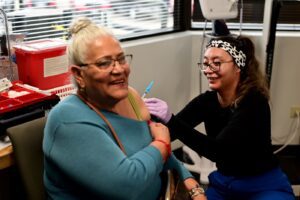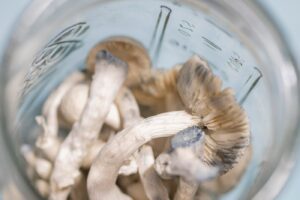A former Lincoln City loanee has opened up about the scary moment doctors told him he could have cancer.
Trevor Carson, who turned out for the Imps under Steve Tilson in 2011, initially thought he had trapped a nerve in his neck before later feeling a ‘little niggle’ in his arm on November 11 last year.
The 31-year-old was due to go on international duty with Northern Ireland but his mum insisted he go and see a doctor to get checked out.
After visiting Wishaw General Hospital in Scotland, the goalkeeper was told he had a clot in his arm that had spread to his lung, with doctors believing it was likely to be cancer.
He told BBC: “They picked up on the clot and it had actually moved into my lung as well, so I got it at the right time.
“If I had waited another week or even a day, who knows what would have happened.”
He added: “For a doctor to tell you he is 90 per cent convinced you have cancer makes you think you take a lot of things for granted.
“It was a bit of a shock. You don’t expect at this age to get that sort of illness.
“Initially, I just wanted to get healthy, to be alive, and to be a father, for my fiancée.”

(Image: Chris Vaughn/Lincolnshire Live)
Tests showed doctors initial fears were incorrect, and the now Motherwell shot-stopper has instead been diagnosed with deep vein thrombosis.
The condition has kept him out of action for several months, but Carson, who made 16 appearances for City, says the support he has received from those he holds dear has helped keep his spirits high.
Deep vein thrombosis (DVT) is a blood clot that develops within a deep vein in the body, usually in the leg.
Blood clots that develop in a vein are also known as venous thrombosis.
DVT usually occurs in a deep leg vein, a larger vein that runs through the muscles of the calf and the thigh.
It can cause pain and swelling in the leg and may lead to complications such as pulmonary embolism. This is a serious condition that occurs when a piece of blood clot breaks off into the bloodstream and blocks one of the blood vessels in the lungs (see below).
Symptoms of DVT
In some cases, there may be no symptoms of DVT. If symptoms do occur they can include:
- pain, swelling and tenderness in one of your legs (usually your calf)
- a heavy ache in the affected area
- warm skin in the area of the clot
- red skin, particularly at the back of your leg below the knee
Each year, DVT affects around 1 person in every 1,000 in the UK.
Anyone can develop DVT, but it becomes more common over the age of 40. As well as age, there are also a number of other risk factors, including:
- having a history of DVT or pulmonary embolism
- having a family history of blood clots
- being inactive for long periods – such as after an operation or during a long journey
- blood vessel damage – a damaged blood vessel wall can result in the formation of a blood clot
- having certain conditions or treatments that cause your blood to clot more easily than normal – such as cancer (including chemotherapy and radiotherapy treatment), heart and lung disease, thrombophilla and Hughes syndrome)
- being pregnant – your blood also clots more easily during pregnancy
- being overweight or obese
All information courtesy of NHS
He said: “People around me took it a lot worse than me.
“I took it as a positive, how lucky I have been – I could have had cancer.
“I’ve tried to remain positive throughout and it’s definitely helped me.
“There have been times I’ve been down, but I’ve got people around me who have picked me up and I’m definitely looking on the bright side now.”
The condition with his clotting means that even a knock to the head could kill him – but that hasn’t stop him from getting back in the gym.
The keeper’s cycle of blood-thinning tablets ends on May 25 and if scans show the clot has completely gone, he hopes to return back to playing at the start of next season.
Passionate about the Imps? Of course you are!
To see news and views on the club from Lincolnshire Live, join our Lincoln City Chat Facebook group.
You can also chat with like-minded fans and share your views on the club and League Two in general.
Join by clicking here





